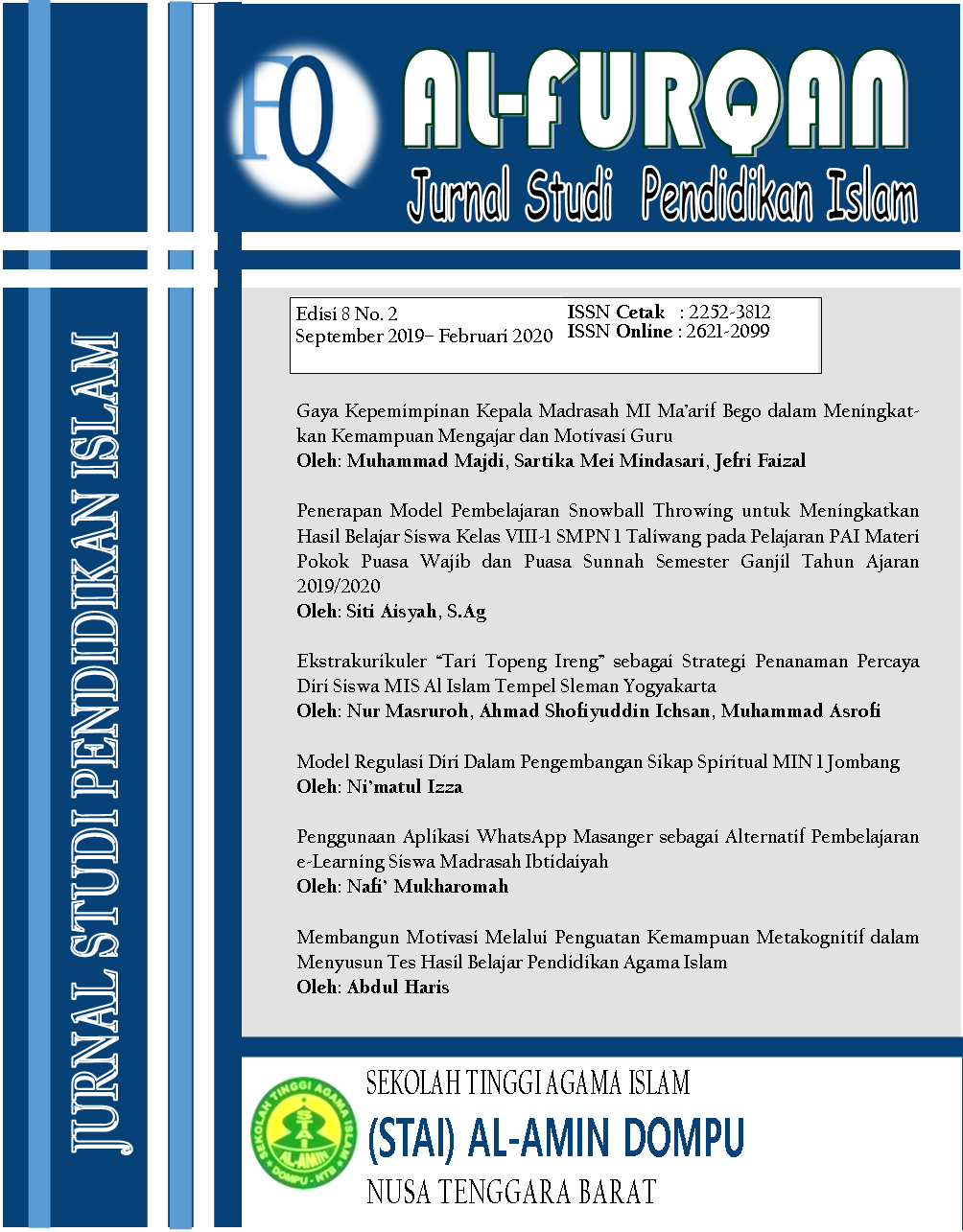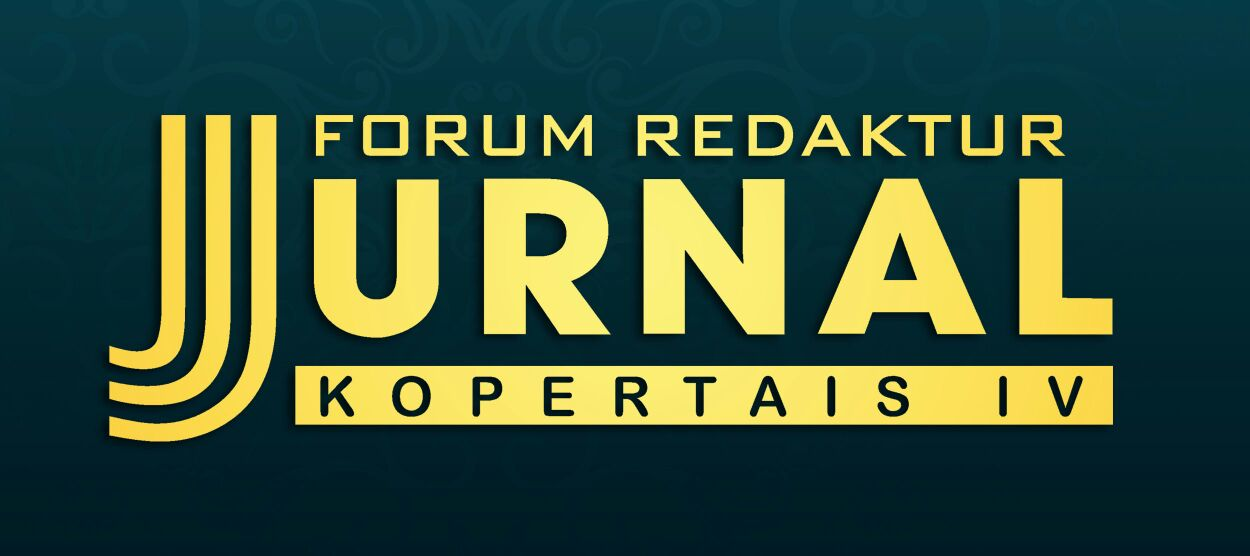Application of Snowball Throwing Learning Model to Improve Student Learning Outcomes of Class VIII-1 of SMPN 1 Taliwang in PAI Subjects of the Subject Material for Obligatory Fasting and Sunnah Odd Semester Academic Year 2019/2020
Keywords:
Snow Ball Throwing, PAI Learning Outcomes
Abstract
The purpose of this study was to see whether the application of the snowball throwing learning model could improve the learning outcomes of Grade VIII-1 students of SMPN 1 Taliwang on PAI subject matter for compulsory fasting and sunnah fasting for the odd semester of 2019/2020 school year. The research method used is classroom action research (CAR) in this class action research selected spiral model from Kemmis and Roggart which consists of several cycles of action in learning based on their reflection on the results of actions in the previous cycle, where each cycle consists of four stages that include planning, implementation, observation (observation), and reflection. The subjects studied were students of class VIII-1 of SMPN 1 Taliwang who obtained PAI lessons in odd semester 2019/2020, totaling 28 people. Based on the data above on the implementation of pre-cycle students who completed learning as many as 11 students while those who did not complete as many as 17 children, the average grade obtained by 72.46 with the percentage of mastery learning classical only 39.28%. From the learning outcomes obtained by students in the pre-cycle, there are still 17 students out of 28 students whose grades are still below KKM which is 72. In the implementation of the cycle, I obtained 28 students who have finished learning while 7 students out of 28 students who have not yet completed the grade grade 74.68 with the percentage of classical learning completeness 75%, learning activities among students 54.16% while the activities of students and teachers 63.08%. From the learning outcomes obtained by students, 28 students have reached ≥72 means that it has reached the KKM which is determined there are only 7 students out of 28 students who have not reached the KKM value. Furthermore, in the second cycle students who finished learning as many as 28 students with a percentage of 89.28% with an average grade of 81.64. The percentage of learning activities between students 81.50%, while the percentage of student learning activities with teachers 83.91%. In the second cycle, almost all students have reached the KKM. The learning outcomes of cycle II have increased compared to cycle I.References
Abdurahman, Mulyono, Pendidikan bagi Anak Berkesulitan Belajar. Jakarta: PT. Rineka Cipta, 2003
Addaruqutni, Imam dkk, Ramadhan bersama Nabi, Solo: Al- Bayan,
Arikunto, Suharsimi, Prosedur Penelitian Suatu Pendekatan Praktik, Jakarta: Rineka cipta, Cet. 12, 2002.
Gulo, W. Metodologi enelitian, Jakatra: Gramedia Widia Sarana Indonesia, 2002.
Purwanto, Evaluasi Hasil Belajar, Yoyakarta: Pustaka Pelajar , 2009, Cet 1.
Sodikin, dkk, Manajemen Penelitian Tindakan Kelas, Surabaya: Insan Cendekia, 2002.
Sudirman, Interaksi dan Motivasi Belajar Mengajar, Jakarta: Rajawali Press, 1992
Suprijono, Agus, Cooperative Learning Terori dan Aplikasi PAIKEM, Yogyakarta: Pustaka Pelajar Cet. III, 2010.
Trianto, Model-model Pembelajaran Inovatif Berorientasi Konstruktivistik, Jakarta: Prestasi Pustaka, 2007.
Wiraamadja, Rochiati, Metodologi Penelitian Tindakan Kelas: Bandung: Remaja Rosda Karya, 2008.
Addaruqutni, Imam dkk, Ramadhan bersama Nabi, Solo: Al- Bayan,
Arikunto, Suharsimi, Prosedur Penelitian Suatu Pendekatan Praktik, Jakarta: Rineka cipta, Cet. 12, 2002.
Gulo, W. Metodologi enelitian, Jakatra: Gramedia Widia Sarana Indonesia, 2002.
Purwanto, Evaluasi Hasil Belajar, Yoyakarta: Pustaka Pelajar , 2009, Cet 1.
Sodikin, dkk, Manajemen Penelitian Tindakan Kelas, Surabaya: Insan Cendekia, 2002.
Sudirman, Interaksi dan Motivasi Belajar Mengajar, Jakarta: Rajawali Press, 1992
Suprijono, Agus, Cooperative Learning Terori dan Aplikasi PAIKEM, Yogyakarta: Pustaka Pelajar Cet. III, 2010.
Trianto, Model-model Pembelajaran Inovatif Berorientasi Konstruktivistik, Jakarta: Prestasi Pustaka, 2007.
Wiraamadja, Rochiati, Metodologi Penelitian Tindakan Kelas: Bandung: Remaja Rosda Karya, 2008.
Published
2020-02-29
How to Cite
AISYAH, S. Application of Snowball Throwing Learning Model to Improve Student Learning Outcomes of Class VIII-1 of SMPN 1 Taliwang in PAI Subjects of the Subject Material for Obligatory Fasting and Sunnah Odd Semester Academic Year 2019/2020. AL-FURQAN, v. 8, n. 2, p. 11-16, 29 Feb. 2020.
Section
Articles
Copyright (c) 2020 AL-FURQAN

This work is licensed under a Creative Commons Attribution-NonCommercial-NoDerivatives 4.0 International License.






